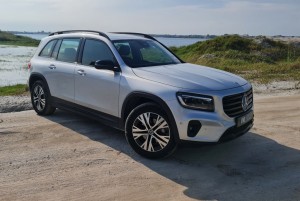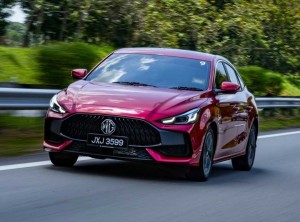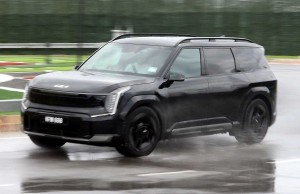Hyundai lays out roadmap for 'software defined vehicles'
By CARSIFU | 12 October 2022
SEOUL: Hyundai Motor Group (the Group) today announced a new global strategy to transform all vehicles to what it calls "software defined vehicles" (SDVs) by 2025.
The industry-leading initiative, presented during the group’s "Unlock the Software Age" global online forum, will deliver an unprecedented era of mobility, giving customers the freedom to remotely upgrade the performance and functionality of their vehicles anywhere at any time.
The group also shared plans to transform the customer experience throughout the vehicle’s entire lifetime and deliver a new era of mobility via constantly evolving software technology.
It said it would ensure that all models, including those already purchased, remain up to date. This will enable vehicle functions, including safety, convenience, connectivity, security, and driving performance, to be upgraded via Over-The-Air (OTA) software updates.
Based on the group’s next-generation EV platform, integrated controller, and an internally developed Connected Car Operating System (ccOS), all group vehicles will be equipped to receive OTA software updates by 2025.
The group expects 20 million vehicles to be registered to its connected car service worldwide by 2025. Connected vehicles equipped with cutting-edge telecommunication features will create unprecedented value and possibilities and provide customers personalised services, such as software subscriptions.
Furthermore, connected car data will network with future group mobility solutions, including Purpose Built Vehicles (PBVs), Advanced Air Mobility (AAM), robotaxis and robots.
Connecting the dots
By establishing a new data platform, innovative services will be provided through connecting and processing the various data generated throughout the car life cycle, as well as promoting the creation of an open ecosystem in partnership with diverse industries such as logistics and accommodation.
Hyundai said it would also invest heavily in software technology to integrate hardware and software technologies and enhance and internalise mobility technology capabilities.
By 2030, the group plans to invest 18 trillion won (RM59bil) in resources, including the establishment of a new Global Software Centre to bolster its software capabilities and accelerate software defined vehicle development.
“By transforming all vehicles to software defined vehicles by 2025, Hyundai Motor Group will completely redefine the concept of the automobile and take the lead in ushering in a never-before-experienced era of mobility,” said Chung Kook Park, president and head of R&D division, Hyundai Motor Group.
“Creating visionary vehicles empowered with the ability to evolve through software will enable customers to keep their vehicles up to date with the latest features and technology long after they have left the factory.”
From 2023, all newly launched vehicles of Hyundai Motor Group will be equipped to receive Over-The-Air (OTA) software updates enabling customers to keep their vehicles up to date.
This transformation will apply not just to electric models, but also internal combustion engine vehicles. All of the group’s vehicle segments sold worldwide will evolve to be software defined by 2025.
Customers will be able to remotely upgrade the performance and functionality of their vehicles anywhere at any time, without any need to take them to a service centre.
And as the vehicle can constantly be updated, its residual value will also be enhanced.
The group initially introduced this service in 2021, and from 2023 will expand it across vehicle models in global market regions able to receive Connected Car Services (CCS).
By 2025, all Hyundai Motor Group vehicles will be equipped to receive OTA software updates.
The group will also offer FoD (Feature on Demand) services next year. This will give customers the ability to select and purchase functions and features that meet their needs and tastes, and the freedom to create vehicles that best match their lifestyles.
The vast amount of data generated by the 20 million subscribed vehicles to the group’s CCS will provide the basis for the further development of personalised services.
The group plans to significantly reduce the time required for all mass-production processes, including planning, design, and manufacturing, by developing a shared hardware and software platform for vehicles.
This will enable vehicle components to be shared across different vehicle segments, leading to more efficient vehicle development and greater cost reductions. Reducing vehicle complexity will further enhance the effectiveness of SDV technology.
Constantly upgradeable vehicle software will bolster Hyundai Motor Group’s ability to secure diverse and stable revenue streams by providing fresh vehicle features and functionality and leveraging selected data to offer personalised services for each customer.
The group’s profitability will also be improved by shortening vehicle development time and reducing costs through platform standardisation.
Next-generation EV platforms
Hyundai will also introduce vehicles in 2025 based on its two new EV platforms, eM, and eS. The new EV platforms will be created under the group’s Integrated Modular Architecture (IMA) system.
The eM platform is being developed specifically for EVs across all segments and will provide a 50 percent improvement in driving range on a single charge compared to current EVs.
The eM platform is also being developed to support Level 3 or higher autonomous driving technology and OTA software update features.
The group’s eS platform will be developed as an EV "skateboard" exclusively for Purpose Built Vehicles (PBVs), with a fully flexible structure to meet B2B demands, and provide tailor-made solutions for companies operating in the delivery, logistics, and car-hailing sectors.
The group’s Integrated Modular Architecture will facilitate the standardisation and modularisation of key EV components.
By standardising the batteries and electric motors, for example, which currently vary across each EV model, the group will flexibly apply common components to each vehicle, thus efficiently expanding its lineup.
The group is also similarly integrating the vehicle controller. Previously, the software system needed to be upgraded separately for each controller to upgrade the functions of vehicles.
However, an integrated controller delivers a solution to make this process more systematic and efficient. Thus, the overall number of controllers can be significantly reduced by integrating the lower-level electrical components managed by top-level controllers.
The infotainment and Advanced Driver Assistance System (ADAS) that the group already mass produced are both currently undergoing function advancements with the introduction of the latest integrated controller technology.
By 2025, both comfort and driving controllers will also be gradually integrated.
Tags
Autos Hyundai
Reviews

Nissan Kicks e-Power: Kicking off a new efficiency

6.8
Mercedes-Benz GLB 200: Measured versatility

MG5: Slick and comfortable cruiser

8.2
Kia EV9: Prime cut

8.0
Triumph Tiger 1200 GT Pro: High adventure on two wheels

8.0
Honda Civic Type R (FL5): Ride on the wild side

Mitsubishi Xpander facelift: Expanding the reach

First drive of Geely Galaxy E5
Videos

Aveta VTM 250; Affordable & Road Legal Adventure Bike

Nissan to launch affordable Vehicle to Grid technology from ...

Aveta VTM 250 hits Malaysian roads
